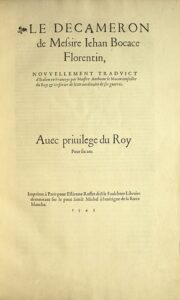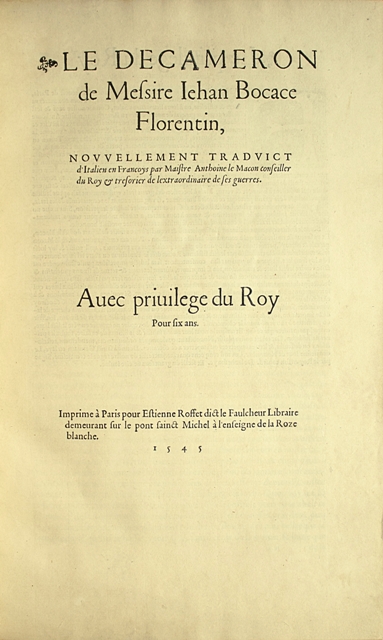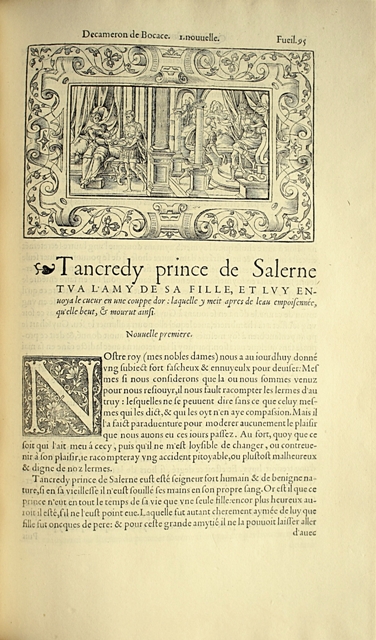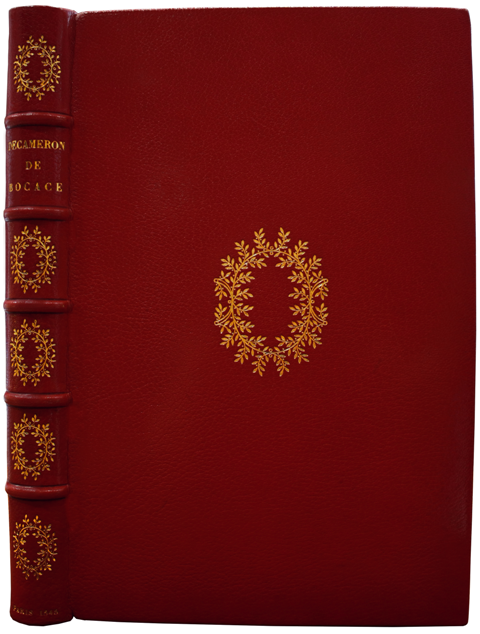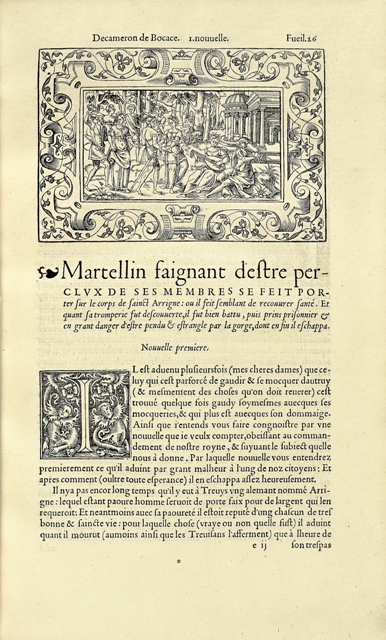Paris, Estienne Roffet, 1545.
Folio [338 x 214 mm] of (8) ll., 254 ll. Bound in full long-grained red morocco, gilt oval foliage on the center of the covers, spine ribbed and decorated with the same pattern repeated on the panels, large gilt inner border, gilt over marbled edges. Binding signed by Mercier.
First edition of the illustrious translation of the Decameron made by Le Maçon on the request of the Queen of Navarre, Marguerite of Angoûleme, who financed the edition. Brun, p.136; Brunet, I, 1006; Fairfax Murray, French, 46; Mortimer, French, 106.
Marguerite of Navarre, whose Heptameron is shaped after Boccaccio’s work, indeed wanted a new translation of The Decameron. The translator dedicated his work to the Queen and the copy encloses the two dedications to Maguerite of Navarre, one in French in Roman letters, and the other one in Italian in Italic letters.
Master-piece of Boccaccio and of Italian literature, written in all probability between 1350 and 1355, The Decameron is the final result of the poet’s prose work, in which the Middle Ages story reaches its peak of perfection.
This edition, the most beautiful published in the 16th century, is illustrated with 10 engravings, “counting among the engraving master-pieces of Renaissance”.
Robert Brun (Le Livre illustré français de la Renaissance) describes the illustration attributed to Etienne Delaune like that: “A suite of 10 charming vignettes (60 x 105) placed in frames with the style of cut leather, of which some elements seem to have been used as models for the workshop’s binder, said ‘of clover’. The vignettes have been relief engraved on metal, as the existence of the original block of the first day that used to possess Eugène Piot which has been reproduced in the ‘Cabinet de l’amateur’ proves it. These vignettes, freely imitated from those in the Giolito edition in Venice in 1542, are amongst the master-pieces of engraving at this time and are usually attributed to Etienne Delaune, though the redactor of the Harvard catalog notices that the most ancient work dated of this artist wasn’t before 1565”.
The edition is illustrated with many historiated initials and with 116 initials of the utmost beauty, 5 to 9 lines high.
A wonderful copy of one of the most important books of the French Renaissance. It testifies the artistic level reached by France on the eve of the Wars of Religion.
From the Descamps-Scrive’s collection with ex libris (Paris, 1924, I, n°1).
See less information
